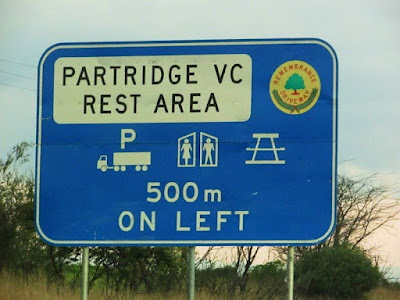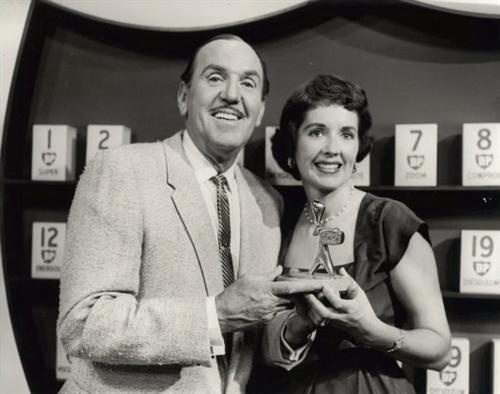FRANK PARTRIDGE, VC:
This is the next named rest stop after the Sir Roden Cutler Interchange on the Remembrance Drive from Sydney to Canberra. It is located at Menangle on the Hume Motorway.
By the way:
- The Hume Highway and the Hume Motorway are named after Hamilton Hume (1797-1873), a famous explorer in the early 19th century who, in 1824, in conjunction with William Hovell, first found an overland route between Sydney and the infant colonial outpost of Port Phillip, the original name of Melbourne.
- Menangle’s name is derived from an Indigenous Australian word for 'a place of swamps and lagoons'. In 1806, Walter Davidson named his land grant in this district "Manangle". This property was later incorporated into the larger Macarthur Estate.
Part of the view at the Partridge VC Rest Area.
As mentioned in Part 1 of the Remembering Heroes series of posts, there is so much more to these names on the signs.
Those of us getting on in years will recall Frank Partridge as a lovely, slowly spoken man who successfully picked all 40 boxes (ie won each of 40 rounds) on Bob Dyer’s BP Pick a Box.
Bob Dyer with Frank Partridge
From Wikipedia:
Frank John Partridge, VC (1924 – 1964) was an Australian soldier, farmer, quiz show champion, and a recipient of the Victoria Cross, the highest decoration for gallantry "in the face of the enemy" awarded to members of the British and Commonwealth armed forces.
Early life:
Frank Partridge was born at Grafton, New South Wales, was educated at Tewinga Public School until he left at 13 to work on the family's dairy and banana farm at Upper Newee Creek, near Macksville.
WW 2 service and Victoria Cross:
In December 1942, during World War II, Partridge was
conscripted by the Australian Army. He served as a private in the 8th
Battalion, a Militia unit formed in Victoria. (For the first half of the 20th century, due to a widespread distrust of permanent military forces in Australia, the reserve military forces, known as militia, were the primary focus of Australian military planning.)
In May 1944, the 8th Battalion
was posted to New Guinea.
In June 1945, the 8th Battalion was transferred to the Bougainville campaign, where it operated to contain Japanese forces on the Bonis Peninsula. It was here that Partridge performed a deed for which he received the Victoria Cross (VC), the highest award for gallantry that could be awarded to British Commonwealth forces.
On 24 July, in one of the last actions of the campaign on Bougainville, two platoons of the 8th Battalion attacked a Japanese post, Base 5, near Ratsua. Partridge's section came under heavy machine-gun fire and suffered severe casualties, including a Bren gunner who was killed. Although wounded in the arm and leg, Partridge retrieved the Bren gun and began shooting at the nearest bunker while under fire himself. He then rushed forward armed with a grenade and a knife, silenced the Japanese machine-gun with his grenade, and killed the only living occupant of the bunker with his knife. Partridge attacked the second until loss of blood compelled him to halt. Later he re-joined the fight and remained in action while the platoon withdrew.
Partridge was the last and the youngest Australian to be awarded the Victoria Cross in World War II. He was also the first Australian Militiaman to receive the award.
Photograph of Frank John Partridge VC, Australian Army, in Sydney NSW.
Partridge (1st left) meets King George VI at Victory Parade, June 1946
Three VC recipients who were in Australia’s Victory Contingent to Britain after the war: Frank Partridge, Richard Kelliher, and Reg Rattey.
Later life:
Discharged from the army in October 1946, Partridge returned to the family farm. He lived with his father in a dirt-floored farmhouse, and in his spare time devoted himself to self-education, reading Encyclopædia Britannica by the light of a kerosene lamp. He had an extraordinarily retentive memory and in 1962–63 he appeared as a contestant on the television quiz show, Pick a Box, compered by Bob Dyer, alongside contestants such as Barry Jones.
His laconic manner appealed strongly to viewers. Partridge was one of only three contestants to win all forty boxes and his prizes were valued at more than £12,000 (in excess of A$250,000 in present-day terms).
Host and Hostess of Pick a Box, Bob and Dolly Dyer, with one of their Logie Awards.
Battle of the Champions: Frank Partridge challenges Barry Jones (later a federal MP) on Bob Dyer’s Pick-a-box quiz show. From memory, Barry Jones won.
He married Barbara Dunlop, a 31-year-old nurse from Turramurra in Sydney, in February 1963. The wedding received extensive media coverage. She remained in Sydney while Partridge built a new house at the farm. He drove to Sydney every weekend to see her.
Later in 1963, Partridge sought Country Party pre-selection for the Australian House of Representatives seat of Cowper. His political views were widely regarded as extreme, and he was not selected. To supplement the income from his farm, Partridge also sold life insurance.
Partridge was killed in a car accident in 1964, and was buried with full military honours in Macksville Cemetery. His wife and three-month-old son survived him.
Monument at Nambucca Heads RSL Club, Nambucca Heads, NSW















No comments:
Post a Comment
Note: Only a member of this blog may post a comment.